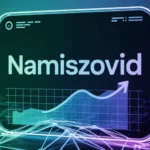Education is undergoing a quiet revolution. While traditional learning methods dominated for centuries, a new approach called “duaction” is reshaping how we think about knowledge acquisition and skill development. This innovative educational philosophy combines the best elements of dual learning pathways, creating a more comprehensive and effective learning experience.
But what exactly is duaction, and why should educators, students, and institutions pay attention? This emerging concept represents a fundamental shift from one-size-fits-all education to personalized, multi-dimensional learning that adapts to individual needs and learning styles.
Whether you’re an educator seeking fresh approaches or a student looking for more effective ways to learn, understanding duaction could transform your educational journey. Let’s explore this groundbreaking concept and discover how it’s changing the landscape of modern education.
What Is Duaction?
Duaction represents a revolutionary educational approach that integrates two complementary learning pathways simultaneously. Unlike traditional education models that follow linear progression, du action creates parallel learning tracks that work together to reinforce understanding and skill development.
The core principle behind du action lies in its dual-track methodology. Students engage with theoretical concepts while simultaneously applying practical skills, creating a symbiotic relationship between knowledge and application. This approach recognizes that different learners process information differently and provides multiple avenues for comprehension.
The Foundation of Duaction
The du action framework builds on several key educational theories. It incorporates elements of experiential learning, where students learn through direct experience and reflection. Additionally, it draws from constructivist theory, which emphasizes that learners actively build their understanding rather than passively receive information.
What sets du action apart is its emphasis on simultaneous engagement. Rather than teaching theory first and then moving to practice, du action interweaves both components throughout the learning process. This creates a more dynamic and engaging educational experience that keeps students actively involved.
Key Components of Duaction
Parallel Learning Tracks
The hallmark of duaction is its parallel learning structure. Students engage with two distinct but complementary educational pathways:
Track One: Conceptual Foundation
This track focuses on theoretical understanding, critical thinking, and knowledge acquisition. Students explore concepts, analyze information, and develop cognitive frameworks for understanding their subject matter.
Track Two: Applied Practice
The second track emphasizes hands-on application, skill development, and real-world problem-solving. Students immediately apply what they’re learning in practical contexts, reinforcing theoretical concepts through direct experience.
Integrated Assessment Methods
Du action employs diverse assessment strategies that evaluate both theoretical understanding and practical application. Traditional testing methods are supplemented with project-based assessments, peer evaluations, and self-reflection exercises.
This comprehensive assessment approach provides a more complete picture of student progress and ensures that learning objectives are met across both educational tracks.
Adaptive Learning Pathways
One of duaction’s strongest features is its flexibility. The system adapts to individual learning preferences and paces, allowing students to spend more time on areas where they need additional support while accelerating through concepts they grasp quickly.
Benefits of Implementing Duaction
Enhanced Knowledge Retention
Research in cognitive science shows that information is better retained when learned through multiple channels. Du action leverages this principle by presenting concepts through both theoretical and practical lenses, creating multiple memory pathways that strengthen long-term retention.
Students who learn through du action methods often demonstrate superior recall compared to those using traditional single-track approaches. The constant interplay between theory and practice creates reinforcement loops that solidify understanding.
Improved Student Engagement
The variety inherent in du action keeps students more engaged than traditional lecture-based learning. By constantly shifting between different types of activities and learning modes, duaction maintains student interest and prevents the mental fatigue that often accompanies monotonous educational approaches.
Students report higher satisfaction levels and increased motivation when participating in du action programs. The immediate application of theoretical concepts helps students see the relevance of their learning, making education feel more meaningful and purposeful.
Better Preparation for Real-World Applications
Traditional education often struggles to bridge the gap between classroom learning and real-world application. Duaction addresses this challenge by embedding practical application throughout the learning process.
Students graduating from du action programs typically demonstrate stronger problem-solving skills and greater confidence in applying their knowledge to novel situations. This preparation gives them a competitive advantage in both academic and professional settings.
Implementing Duaction in Educational Settings
Curriculum Design Strategies
Successful duaction implementation requires careful curriculum planning. Educators must identify natural connection points between theoretical concepts and practical applications, then design learning experiences that seamlessly integrate both elements.
The key is finding balance. Neither track should dominate the educational experience. Instead, they should complement and reinforce each other throughout the learning process.
Technology Integration
Modern technology plays a crucial role in effective du action implementation. Digital platforms can facilitate the coordination of parallel learning tracks, provide personalized learning experiences, and enable real-time assessment and feedback.
Virtual reality, simulation software, and interactive learning platforms are particularly valuable tools for creating immersive duaction experiences that would be difficult or impossible to replicate in traditional classroom settings.
Faculty Development and Training
Implementing du action requires educators who understand both its theoretical foundation and practical application. Professional development programs should focus on helping faculty members develop skills in managing parallel learning tracks and creating integrated learning experiences.
Successful du action educators often serve as facilitators and coaches rather than traditional lecturers, guiding students through their dual-track learning journey while providing support and feedback along the way.
Challenges and Considerations
Resource Requirements
Duaction implementation typically requires more resources than traditional educational approaches. The need for specialized equipment, technology, and materials for practical applications can create budgetary challenges for educational institutions.
However, many institutions find that the improved learning outcomes and student satisfaction justify the additional investment. Grant funding and partnerships with industry can help offset implementation costs.
Assessment Complexity
Evaluating student progress in duaction programs requires more sophisticated assessment strategies than traditional education. Faculty must develop expertise in multiple assessment methods and learn to synthesize results from different evaluation approaches.
This complexity can initially slow the assessment process, but most educators find that the richer, more comprehensive understanding of student progress outweighs the additional effort required.
The Future of Du action
Educational institutions worldwide are beginning to recognize the potential of du action approaches. Early adopters are seeing promising results in student engagement, learning outcomes, and graduate preparedness.
As technology continues to advance, du action implementation will become more accessible and cost-effective. Artificial intelligence and machine learning technologies promise to make personalized du action experiences available to larger numbers of students.
The growing emphasis on lifelong learning and skill adaptability in the modern workforce makes duaction particularly relevant. Its focus on both theoretical understanding and practical application prepares learners for the complex, rapidly changing professional landscape they’ll encounter.
Getting Started with Duaction
Educational leaders interested in exploring duaction should begin with pilot programs in select courses or departments. This approach allows for experimentation and refinement before broader implementation.
Start by identifying subjects where the connection between theory and practice is most obvious. Technical fields, business programs, and hands-on disciplines often provide natural starting points for du action implementation.
Engage faculty members who are enthusiastic about innovative teaching methods and willing to experiment with new approaches. Their experience and feedback will be invaluable in refining du action strategies and building institutional support.
Transforming Education Through Duaction
Duaction represents more than just another educational trend. It embodies a fundamental shift toward more effective, engaging, and relevant learning experiences that prepare students for success in an increasingly complex world.
The integration of theoretical knowledge with practical application creates learning experiences that are both deeper and more meaningful than traditional approaches. Students develop not just knowledge, but the ability to apply that knowledge effectively in real-world situations.
As educational institutions continue to seek ways to improve learning outcomes and student satisfaction, du action offers a promising pathway forward. Its emphasis on dual-track learning, personalized approaches, and integrated assessment creates educational experiences that truly prepare learners for the challenges and opportunities they’ll face.
The future of education lies not in choosing between theory and practice, but in finding innovative ways to combine them effectively. Du action provides the framework for making this integration both systematic and successful.
















